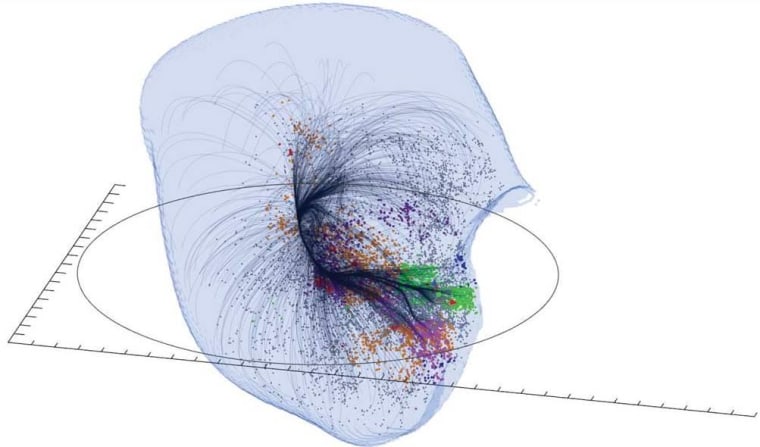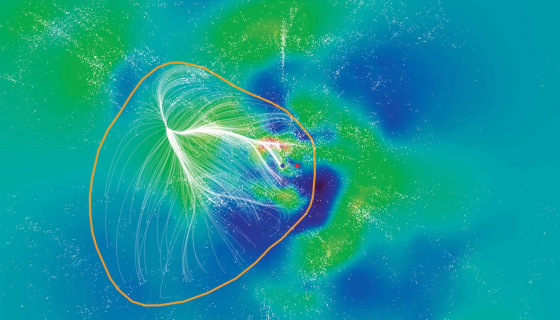There are lots of lines in our planet's cosmic address: Earth, the solar system, the Milky Way galaxy, the Local Group of galaxies, and the Virgo Cluster of galaxy groups. Now astronomers are adding another one: the Laniakea Supercluster, which takes its name from the Hawaiian term for "immense heaven."
Laniakea's outlines and boundaries are laid out for the first time in this week's issue of Nature. Our Milky Way lies on the outskirts of the supercluster, which spans 500 million light-years and contains the mass of 100 quadrillion suns in 100,000 galaxies.
"We have finally established the countours that define the supercluster of galaxies we can call home," lead researcher R. Brent Tully, an astronomer at the University of Hawaii at Manoa, said in a news release. "This is not unlike finding out for the first time that your hometown is actually part of a much larger country that borders other nations."
Superclusters rank among the largest structures in the interconnected web of galaxy clusters that account for much of the matter in the universe. Tully and his colleagues say the extent of superclusters should be defined by their gravitational spheres of influence — and they used the Green Bank Telescope and other radio telescopes to map out the motions of galaxies within our sphere of influence.
The results help clarify what's going on with the "Great Attractor," the focal point that influences the motion of our own Local Group as well as other groups of galaxies. The Great Attractor is a large gravitational valley that draws all those galaxies inward, just as gravity pulls streams of water along descending paths into our puny valleys on Earth.

In addition to Tully, authors of "The Laniakea Supercluster of Galaxies" include Helene Courtois, Yehuda Hoffman and Daniel Pomarede.
